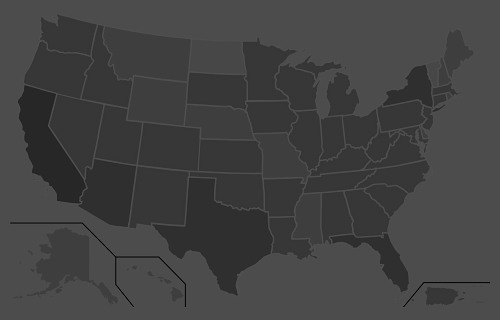“Our added winter moisture and active calling period led to a very long nesting and hatching season, starting in late April and extending into early summer, with chicks hatching as late as early July,” O’Dell said. “From a population standpoint, we are out of a deficit for the first time since 2001-2002. Quail are starting to pop up in places they haven’t been seen in a while.
“If you’ve never had the chance to experience what Arizona quail hunting built its name on, then this would be the year to get out and enjoy it.”
Meanwhile, hunters should note that the season for Mearns’ quail doesn’t begin until Dec. 4. It’s summer rainfall that plays a key role in nesting success and population numbers of this species. After a spotty and relatively weak monsoon across southern Arizona, these birds are likely to be abundant only in pockets that received sufficient precipitation this summer.
A valid Arizona hunting or combination hunt and fish license is required for all hunters 10 and older. Those hunters under 10 must either have a valid hunting or combination hunt and fish license, or be accompanied by an adult who possesses a valid hunting or combination hunt and fish license. Licenses can be purchased online or at license dealers statewide. A youth combination hunt and fish license (ages 10 to 17) is $5.
The general bag limit is 15 quail per day in the aggregate, of which no more than eight may be Mearns’ quail (when the Mearns’ season opens Dec. 4). The general possession limit is 45 quail in the aggregate after opening day, of which no more than 15 Gambel’s, scaled or California quail in the aggregate may be taken in any one day. After the opening of the Mearns’ season, the 45-quail possession limit may include 24 Mearns’ quail, of which no more than eight may be taken in any one day.
More quail-hunting information can be found on the department’s website at https://www.azgfd.com/Hunting/. Another resource for both new and experienced hunters alike is “An Introduction to Hunting Arizona’s Small Game.” Written by Randall D. Babb, the 196-page, full-color book covers where and how to hunt small game birds (like quail), squirrels, rabbits, ducks and geese. It also includes how to prepare and cook your harvest, with illustrations and recipes. The book can be ordered for $16.95 at www.azgfd.gov/publications.
Finally, hunters should check out O’Dell’s techniques for field-dressing quail at https://www.youtube.com/watch?v=3gRwZAcWzzk.
####
Publishers Notes: OUT OF STATE HUNTERS, FISHERMEN & OUTDOOR ENTHUSIASTS; Due to the Covid 19 pandemic, there could be limitations for OUT of STATE hunters, fishermen and other outdoor enthusiasts to include a 14-day quarantine requirement or negative COVID-19 testing alternative. Please check with the State's Department of Natural Resources BEFORE you travel or apply for the 2020 Fall Hunts.
Disclaimer: The views expressed on this site are that of the authors and not necessarily that of TBC Press
Alabama 2022 Recreational Red Snapper Season Opens May 27
Submitted by: TBC Press
Posted on: 03/21/22
The Backcountry Press
The country's premier daily HUNTING, FISHING & OUTDOOR news in the USA and around the globe. Read whats happening in your neck of the woods & beyond.
© 2020 TBC Press - All Rights Reserved Website Design by:
News # 14735
While this year’s season is projected to last around 40 days, the 2021 season was open for 124 days due to several factors.
“Early in the peak season (middle of the summer), fishing conditions were problematic for a lot of people due to tropical weather, especially the smaller boats, so the effort was not what we expected early in the year,” Bannon said. “Then as you get later in the year, people are drawn into other activities. School is in session. Your kids are participating in school sports. Hunting season becomes a priority for many people later in the year. So as long as we have quota, we will remain open. It just worked out last year that we closed the last Monday of the year in December.”
Despite higher fuel prices, Bannon thinks if the weather is good in the upper Gulf of Mexico, red snapper anglers will be on the water.
“If the weather is perfect and the effort is high, I think it could be like 2020,” he said. “When COVID-19 first hit and only outdoors activities were considered safe and healthy, a tremendous number of people went fishing because they couldn’t do anything else.”
Anyone interested in the 2021 Snapper Check numbers can visit www.outdooralabama.com/mrd-fisheries-section/red-snapper-faqs for details.
The Scientific and Statistical Committee (SSC) of the Gulf of Mexico Fishery Management Council (Gulf Council) recently completed its first meeting of 2022, and the results were mixed, according to Bannon.
Alabama’s federally permitted charter (for-hire) fleet operates under the federal regulations and not the state-managed system that governs anglers fishing from state-licensed-only charter vessels and private recreational vessels. NOAA Fisheries has not set the federal for-hire season, but Bannon expects a June 1 opening with a season length of 62 or 63 days. The charter season is open seven days a week until it closes.
“The federally permitted charter boats are moving to an electronic reporting system, similar to Snapper Check,” Bannon said. “They have to report their catch for every species electronically after every trip. That’s going to really fine-tune the data for the federal for-hire boats, and it gives them, potentially, the opportunity to add more days to the season or additional days later in the year if they don’t reach their quota.”
The charter fleet was afforded two extra weeks of fishing last fall because NOAA estimated the fleet didn’t reach its quota during the summer season.
Anglers landing red snapper in Alabama with private boats are required by law to complete one landing report per vessel trip of their harvested red snapper through Snapper Check before the fish are removed from the boat or the boat with the fish is removed from the water. Reporting of greater amberjack and gray triggerfish also is mandatory. Owners/operators of federally permitted charter vessels are required to possess an Alabama Gulf Reef Fish Endorsement, but they no longer need to report in Snapper Check due to the implementation of the federal electronic reporting system.
The easiest way to comply with the reporting requirement is through the Snapper Check app found on the Outdoor AL app. The app is available from Apple and Android stores. Reports can also be submitted online at www.outdooralabama.com. Paper reports and drop boxes are no longer available.
For private recreational anglers, weekends are defined as 12:01 a.m. Friday through 11:59 p.m. Monday. The daily bag limit remains at two red snapper per person per day with a minimum size limit of 16 inches total length.
Anglers over the age of 16 must have a valid Alabama saltwater fishing license. Any Alabama resident 65 or older or a lifetime saltwater license holder must have a current saltwater angler registration. The saltwater angler registration is free and available at www.outdooralabama.com/saltwater-fishing/saltwater-angler-registration.
Also, all anglers 16 years of age and older who possess red snapper or other gulf reef fish are required to have an Alabama Gulf Reef Fish Endorsement, available at www.outdooralabama.com/saltwater-fishing/saltwater-reef-fish-endorsement.
For more information see; bannon-expects-return-normal-recreational-snapper-season
####
Alabama's private 2022 recreational red snapper season opens on May 27, the Friday before Memorial Day.
Alabama’s 2022 red snapper season for private recreational anglers will follow the same schedule as the 2021 season, but Scott Bannon, Director of the Alabama Department of Conservation and Natural Resources (ADCNR) Marine Resources Division (MRD), would be surprised if the 2022 season closes in similar fashion.
The 2022 season opens the Friday (May 27) before Memorial Day and runs each extended weekend from Friday through Monday until Alabama’s annual quota is projected to be met. Right now, NOAA (National Oceanic and Atmospheric Administration) Fisheries has not released the quotas for 2022.
“We anticipate our quota for this year will be similar to last year’s, which was 1.12 million pounds,” Bannon said. “If the fishing effort is ‘normal,’ and the weather is favorable, we’ll fish probably 30 to 40 days, depending on the effort. We encourage people that if the weather is bad, don’t go. Wait until the weather is better.”












